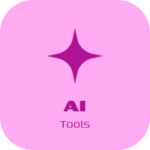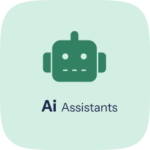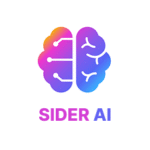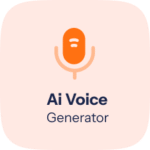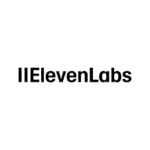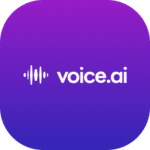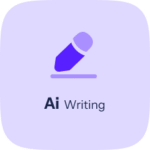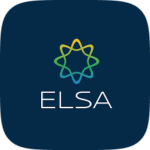Revolutionizing Efficiency: How AI Automation Software Transforms Business Operations
In today’s competitive digital landscape, businesses face relentless pressure to boost productivity, cut costs, and deliver seamless customer experiences. A game-changing solution to meet these challenges is AI automation software for streamlining business operations. These intelligent tools revolutionize how organizations work—automating repetitive tasks, integrating fragmented workflows, and enabling smarter, data-driven decisions in real-time. From AI-powered workflows to intelligent process automation, companies are embracing these technologies to redefine performance across their departments. In this article, we take a closer look at how AI automation is reshaping operations—and how you can harness its full potential to stay ahead of the curve.
What Exactly is AI Automation Software?
AI automation software combines machine intelligence with task automation to enhance and accelerate business operations. Unlike basic automation tools that follow strict pre-set rules, AI-driven systems learn from data, evolve processes, and offer predictive insights. These solutions not only improve efficiency but also enhance accuracy and decision-making over time. Leading technologies in this space include robotic process automation (RPA), natural language processing (NLP), and machine learning (ML)–based analytics.
What Core Capabilities Make AI Automation Software Stand Out?
- Data-Driven Decisions: Leverages AI models to uncover patterns and recommend optimal actions.
- End-to-End Task Automation: Frees up employee time by delegating repetitive workflows to bots.
- Workflow Integration: Connects platforms like CRM and ERP systems for seamless operations.
- Regulatory Compliance & Security: Enforces data controls and governance automatically.
- Scalable Architecture: Expands with business growth while maintaining performance.
AI automation is more than an efficiency tool—it’s a strategy enabler for intelligent and scalable growth.
Why Should Businesses Care?
- Enhanced Productivity: Reduces manual workloads and human error.
- Smarter Insights: Real-time analytics improve decision-making accuracy.
- Cross-Platform Flexibility: Works across teams, tools, and departments without added complexity.
Where Is AI Automation Software Making the Biggest Impact?
These intelligent systems are driving transformation across virtually every major industry. From healthcare to finance and logistics, AI automation helps businesses become faster, leaner, and more adaptive.
How Is AI Improving Healthcare Operations?
AI tools streamline administrative tasks like managing patient records and scheduling. Diagnostic support through AI image recognition and NLP reduces delays and improves accuracy. For instance, hospitals using automation reported up to a 25% reduction in paperwork-related workloads.
What Role Does AI Play in Finance?
In accounting and risk management, AI assists in automating reconciliations, identifying anomalies, and predicting fraud. Financial institutions using AI tools have reported enhanced accuracy and 30% faster compliance processing timelines.
How Does AI Enhance Retail & E-commerce?
In retail, AI powers chatbots, personalizes product recommendations, and optimizes demand forecasting. Brands using AI-driven inventory systems have lowered their storage costs by up to 20%.
What Benefits Does AI Bring to the Logistics Sector?
From automated inventory management to dynamic route optimization, AI reduces delays and maximizes resource usage. Logistics companies adopting AI see up to 40% faster delivery times and increased warehouse efficiency.
Key Learnings from Diverse Sectors
- Industry-Agnostic Benefits: AI adapts to various operational models and challenges.
- Operational Efficiency: Enables quicker service with lower overhead.
Case Study: How One E-Commerce Brand Gained 400% ROI in 6 Months
A mid-sized e-commerce company integrated AI to automate order tracking and live customer support. By deploying chatbot technology and RPA, order handling time was slashed by 35%, while customer satisfaction grew by 22%. Within six months, the team reduced manual workload and achieved over 400% return on investment—all while maintaining scalability.
What’s Ahead: AI Automation Trends You Shouldn’t Miss
Looking ahead, AI automation software for streamlining business operations will become increasingly adaptive and decentralized. With growth in generative AI, personalization will become deeper, while edge computing ensures decision-making happens closer to the action. According to Gartner, by 2027, 70% of organizations will deploy AI automation in at least one core workflow—up from less than 20% in 2022.
Key Stats That Prove the Value of AI Automation
- 80% of executives say AI automation significantly increases workforce productivity. [PwC Report]
- Companies using AI automation report a 40% average reduction in operational costs. [McKinsey & Co]
Top Tools Compared: Which AI Automation Platform Is Right for You?
| Tool | Main Features | Pricing | Best For |
|---|---|---|---|
| UiPath | RPA, AI Center, Workflow Automation | From $420/month | Scalable enterprise-level automation |
| Automation Anywhere | Cloud-native, IQ Bot, Real-time Insights | Custom quotes | Cloud-first automation strategies |
| Zapier | No-code tools, 6000+ App Integrations | Free–$49/month | SMBs and startups needing fast setups |
AI Automation Myths—Debunked
| Common Misconception | Reality |
|---|---|
| AI Replaces Human Jobs | It shifts focus to higher-value work, not job cuts |
| Only Enterprises Can Afford AI | Many affordable options exist for SMBs |
| Adoption Is Too Complex | Modern tools offer low-code/no-code capabilities |
What Mistakes Should You Avoid with AI Integration?
- Undefined Goals: Always outline KPIs and success metrics before implementation.
- Tool Siloing: Select platforms that integrate well with your existing ecosystem.
- Over-Automation: Prioritize tasks where automation adds real value.
- No Human Oversight: Maintain a human layer for exception handling and ethics.
Pro Tips for Seamless AI Automation Deployment
- Pilot Small, Scale Fast: Start with one process, measure results, then expand.
- Educate Your Teams: Build basic AI literacy across departments.
- Track KPIs Consistently: Monitor performance and optimize often.
- Leverage Expertise: Partner with trusted providers like Ploonad.
Get Started with This Handy AI Automation Checklist
- Clearly define automation goals.
- Identify high-impact processes to automate.
- Select an AI tool that fits your scale.
- Integrate securely into existing systems.
- Train staff and assign internal owners.
- Review KPIs and refine as you scale.
Real-World Success Stories
John (Retail Owner): “We cut response times from hours to minutes with AI support bots—customers noticed the difference immediately!”
Sara (HR Manager): “AI now handles 80% of our onboarding tasks—error-free and five times faster.”
Leo (Finance Analyst): “With AI analytics, weekly reports that took 4 hours now finish in under 90 minutes.”
Helpful Tools and Learning Resources
- “AI Superpowers” by Kai-Fu Lee: Understand AI’s global business impact.
- Zapier: Ideal for small to mid-size automation needs.
- UiPath Academy: Free learning hub for RPA and AI tools.
- Gartner Insights: Stay updated with AI industry benchmarks.
FAQ: Everything You Need to Know About AI Automation
1. What does AI automation software do?
It automates manual business processes using AI, increasing speed, accuracy, and scalability.
2. How does AI automation streamline operations?
By reducing repetitive tasks and integrating data systems for smarter, faster decision-making.
3. Is it viable for small businesses?
Absolutely. Many platforms offer budget-friendly, scalable plans for SMEs.
4. Do I need coding skills to use it?
No. Many tools are built for non-technical users with drag-and-drop features.
5. How long does deployment take?
Typically, between a few weeks and three months depending on your processes.
6. Will it replace employees?
No—it supports employees by automating tedious work, not replacing strategic roles.
7. How secure is the software?
Top platforms offer enterprise-level encryption and compliance features.
8. Which industries see the most benefits?
Finance, healthcare, retail, logistics, and even HR departments benefit significantly.
9. Can it work with my existing ERP or CRM?
Yes—most systems provide integrations for platforms like Oracle, SAP, and Salesforce.
10. What impact does AI have on the customer experience?
It enables faster responses, personalized service, and 24/7 availability.
11. How is RPA different from AI automation?
RPA follows fixed rules; AI automation adapts and learns based on data input.
12. Which are the best platforms?
UiPath, Automation Anywhere, Zapier, and Blue Prism are leading options.
13. How do I calculate ROI?
Track time saved, cost reductions, and error rate drops post-implementation.
14. Is cloud access needed?
Not always—some tools run on-premise or offer hybrid deployment.
15. Is staff training necessary?
Yes. Basic training ensures smooth adoption and long-term success.
16. Can I get a virtual AI assistant?
Yes. Tools like ChatGPT for business offer easy access, even with crypto payments.
17. Are these tools expensive?
Costs vary, but many start with free tiers or usage-based pricing.
18. How often should workflows be updated?
Reevaluate quarterly or after major changes in operations.
19. Who manages tools after setup?
Vendors offer support; external consultants provide additional expertise if needed.
20. Can AI handle all support tasks?
AI covers routine issues. Human agents are best for complex or sensitive queries.
Conclusion: Embrace the AI-Powered Future
AI automation software is no longer a trend—it’s becoming essential to modern business strategy. By reducing workloads, improving decision-making, and streamlining processes, it helps companies work smarter, not harder. The earlier you start, the sooner you can unlock the benefits. Explore trusted platforms like Ploonad to kickstart your journey into intelligent automation—and transform your operations into a competitive advantage.


